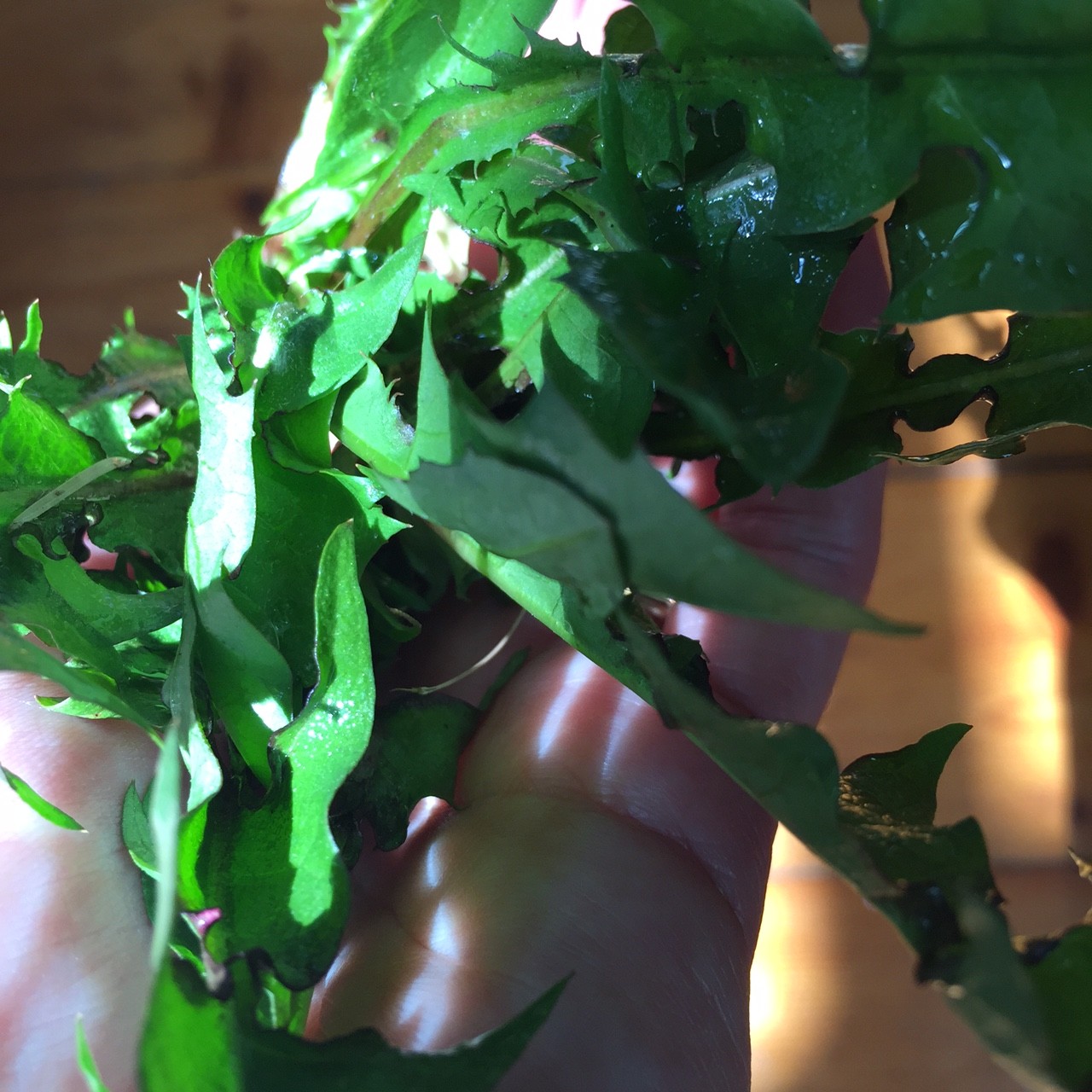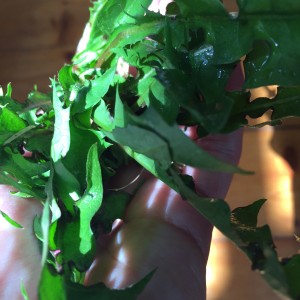
I always have a hard time with the “leftovers” discussion with my Healing Diet students.
It is my not-so-secret agenda to get people back in the kitchen and cooking for themselves. In fact, I think it’s a HUGENORMOUS part of our health epidemics, and one of the most important, and empowering parts of natural healing, and self-healing.
It can also be one of the biggest obstacles. Our lives are so full. Busy is our mantra. In the past generation or three (perhaps especially for women) spending your time out of the kitchen and in the world working was liberation. Being able to pay someone else to cook and perhaps even clean for you has become more desirable and even enjoyable. And it seems now, there is less and less choice – we don’t have or feel we have the time to cook for ourselves and family, even if we want to – and many of us also don’t know how to cook (!) because perhaps our parent’s did not, either, and could not teach us or lead by example.
Though, when we leave our food preparation up to others, even our ingredient choices up to others, we’re literally putting our life in their hands.
Am I being too dramatic?
When my students do begin cooking for themselves, so often they’re thinking big – “If I can make time to cook a whole bunch on Sunday, I’ll have meals for the rest of the week, right?”
Right. Sort of. How would that meal taste by Friday? Do you want to keep eating it? Will it go to waste? Will it be satisfying? These questions are important in Ayurvedic medicine. Our food is our medicine. Medicine expires. Its effectiveness diminishes over time. Fresh ingredients offer their nutrients, their prana and life force, up to us readily, which also means it goes out just as quickly.
How to encourage them to keep going, without getting too nit-picky? How to introduce this idea of Prana without sounding woo-woo or disconnected? Without making Ayurveda seem impossible?
Simple tips, and learning from experience.
Leftovers are considered to be less optimal, because the Prana in the food dissipates as time goes on. Most of my teachers share a 24-hour rule. Basically, food is ideally composted after 24 hours, because the quality becomes tamasic, rather than sattvic. Or to use other words, it becomes dull and lifeless, promoting those qualities rather than brightness, energy and clarity.
We are what we eat. Down to our cells, from our emotions and enthusiasm for life. Do we want the energy of day old pizza? Or of wild dandelion greens? Do we want the energy of grandma’s lasagna, or an angry chef’s cacciatore? There are, of course, multiple layers to this – we are all individuals, and we are quite complex beings.
Though which did you lean towards, and why? The subtle does matter. Over time, the subtle becomes not so subtle. It permeates our being.
Prana is often translated as life force energy. It is sort of the direction, the intention, the intelligence contained within something. Maya Tiwari says that Prana “is the ‘Soul within the Body’…the cosmic breath of the Essential Self.” Subtle, but vital.
It’s Spring here in Vermont, and everyone’s getting excited about foraging for wild foods. For one, finding ‘free food’ can be financially liberating. Though, as you can imagine, the excitement is beyond that.
My husband was given one stalk of wild asaparagus by our neighbor yesterday. Plucked right from the ground, he munched in it. When he came home, he told me about his experience, saying, “Why do we even cook asaparagus? It was so tender, so fresh…” He was high on that one piece of asaparagus, on the Prana, so pulsing, so alive, so ready to commune with his being.
This might sound cheesy, but haven’t you experienced this? Eating something picked so fresh, it’s still living?
Most of the food in our grocery stores has been plucked days, if not weeks before we buy it, bring it home, and ingest it. That life force energy is diminishing the longer something is detached from its source of energy. I think we can all get behind that.
It’s the reason we shop at farmer’s markets, among many others. That produce is not only grown and nurtured by our neighbors, but it is also closer to the source. It is allowed to ripen in the soil or ‘on the vine’ and come to maturation and full flavor. It is perhaps hours or days from growing, so more of that life stuff is preserved.
Fresh produce, as we know, will wilt and start to actually rot if we do not use it in time. Tis the nature of nature, everything dies and returns to the soil. When something is cooked, some of that prana (since we’re looking at this from an energetic perspective) becomes more immediately available for your assimilation. That also means that it dissipates more quickly – cooked food is going to go off long before the raw ingredients when left un-refrigerated.
And even if you pop it in the fridge, a bag of greens properly stored, say, will hold on to its life force longer than cooked, which might get slimy or moldy within a day or two.
And when you’re healing – which is to ay, all the time – which do you want feeding your cells? Regardless of the energy/calories, which ‘energy’ do you want to become you?
Cooked vs Raw in Short
This might get you thinking – well, then why cook that produce at all? This comes back to Ayurvedic principles of Agni, the power of your digestion, and the gunas, or qualities. This is how we make food choices for healing. Anything can be medicine or poison, depending on how it affects our digestive capacity – because in Ayurveda, is is NOT just the what, but they how that may be equally or more important.
Sometimes raw food is completely appropriate, and even preferred. At other times, your digestive abilities, or agni, may not be optimal and you’re unable to assimilate that beautiful prana from the raw foods – and light cooking can help. The addition of external fire helps the internal fire of digestion assimilate the prana. This is another, and important discussion that we’ll save for The Healing Diet. (Feel free to check out this past post as well for more of Agni.)
Simplicity is Healing
When we are used to eating out, we’re used to eating big, complex flavors and dishes. We may even feel like we’re not ‘getting enough’ if we don’t eat like that at home. Cooking and eating this way, for certain, takes a lot of time, and it is expensive – this can be really discouraging when you’re trying to start cooking for yourself more at home. It does not need to be this way.
Once you learn how to use what to have on hand, and get a little routine around it, it can be super simple to cook healthily at home. And then you can more easily start experimenting with more ingredients and bigger flavors. (See references!)
HOW-TO TIPS to COOK for YOURSELF more OFTEN:
- One tip that I share with my students is to start your mornings, each day, or every other day, with turning on a pot of grains or legumes to use as a base for some of your meals for that day.
- This said, head to the bulk department of your grocery store this weekend and buy a pound or so of grains and legumes you think you can cook easily to stock your pantry. I recommend red lentils, puy lentils, adzuki beans, chickpeas, basmati rice, mung beans, millet, or brown rice.
- For a truly, simple, Ayurvedic cook book that is not going to make you go out and buy 7 zillion spices and exotic ingredients, I recommend Myra Lewin’s, Simple Ayurvedic Recipes
- Allow yourself to buy something you’re excited about – whether you see a sign for a farmer’s market and stop in, or are just running into your health food store – grab something seasonal and fresh or interesting, even if it’s not on your usual radar.
- Use food blogs for inspiration – try these: 101cookbooks.com, vidyacleanse.com, ashleyneese.com, mynewroots.com
I’d love to hear from you – what has helped you with cooking more at home? What would make it easier for you?
Love,


